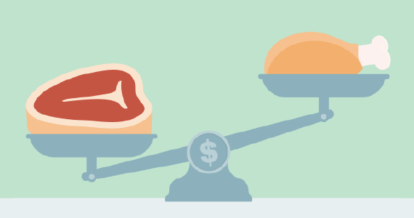If you’re in the restaurant industry, chances are you’re pretty familiar with point of sale (POS) systems. In fact, you might be a bit of an expert.
But while you probably know how to punch in drink orders and void extra guac, you may not know the ins and outs of every part of your POS system.
So what does POS mean? What’s the difference between a thermal printer and an impact printer? And what the heck is a router for anyway?
Though all this tech may seem a bit overwhelming, knowing all the proper POS terminology can be a major leg up for anyone working in a restaurant. This knowledge not only makes it easier to use the technology, but it also gives you an edge when purchasing new software or hardware.
To help you master the world of POS systems and other restaurant technology, we’ll cover:
- What does POS mean?
- Why it’s important to know your POS terminology
- The most important POS terms and what they mean
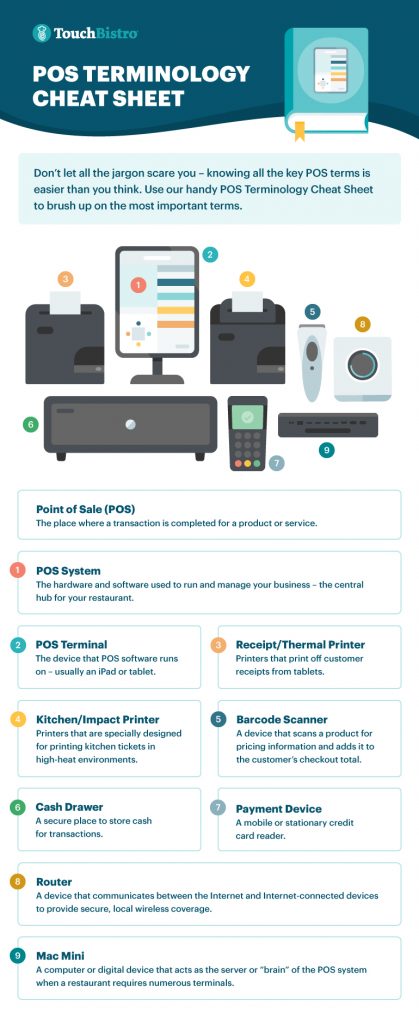
What Does POS Mean?
Before we can even begin to dive into the full point of sale system, it’s important to answer one big question: What does POS mean?
First of all, POS is an acronym – no, not that acronym. It stands for “point of sale,” which can be defined as the place where a transaction takes place between a customer and a merchant.
However, in the context of restaurants, you’re often talking about the point of sale system, which is specifically the hardware and software used to run your business.

Why You Should Know Your POS Terminology
While you’ve probably heard POS and POS system used interchangeably, it’s important to know the correct terms for this key piece of restaurant technology – especially if you’re the one in charge of a new POS purchase.
Getting a handle on all that POS jargon can give you more confidence when it comes to buying new POS hardware or software. Nothing should stand in your way of adopting new restaurant technology and speaking the same language as the salesperson, which can help you understand exactly what you’re getting.
Even if you’re not making a new POS purchase, knowing these terms is helpful for anyone in your restaurant using the technology.
For instance, a server who knows a receipt printer from a thermal printer will know exactly which paper to use when refilling the machine. Not to mention, staff who understand proper POS meaning and terminology can easily troubleshoot with customer service when tech issues pop up. Knowing these terms makes it easier for everybody at your restaurant because they know what they’re working with!
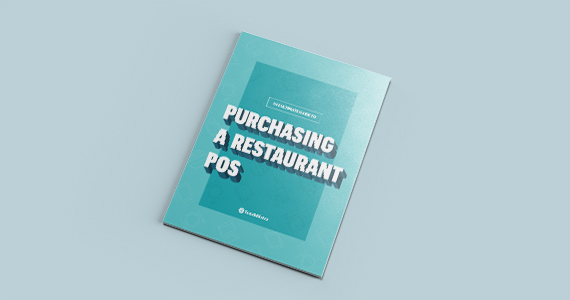
Get the guide that helps you evaluate different POS solutions and find the right one for your business.
Important POS Terms and What They Mean
Whether you want to brush up on your terminology ahead of a big POS purchase or you simply want to get a better handle on all the jargon, we’ve rounded up a list of the most important POS terms you’ll want to know.
POS
As mentioned above, point of sale (POS) refers to any place where a transaction is completed for a product or service. At the POS, the merchant calculates the amount owed by the customer, and the customer makes the payment. The moment when the customer produces payment in exchange for goods or services is known as a POS transaction.
POS System
So what is a POS system in a restaurant? A point of sale system is the actual hardware and software used to run and manage your business. The POS system is essentially the central hub for your restaurant, helping you with everything from processing sales to managing inventory.
But, when it comes to POS systems, there are some important distinctions to make: traditional systems, cloud-based systems, and hybrid systems.
Traditional POS Systems
Traditional POS systems like the Micros POS store data on-premise on local servers and run on a closed internal network. This means that all of the POS hardware has to be set up in one place and can’t be moved. Just think about those clunky cash registers and receipt printers you’ve seen on a restaurant’s front desk.
Cloud POS Systems
There was a big shift in the early 2000s. Cloud-based servers made it possible for POS systems to connect to the Internet and POS systems become mobile. Similar to the way banking apps allow you to access your accounts online, a cloud-based POS allows staff to serve customers and process transactions from anywhere in the venue.
For restaurant owners, the benefits of a mobile, cloud-based POS system are huge:
- Mobile checkout and payments
- Real-time access to POS data and analytics
- The ability to manage your business anytime, anywhere, from any device
- Elevated customer service
- Increased table turnover due to faster ordering
- Increased staff productivity leading to lower labor costs
While there are a lot of benefits to the cloud, there is a major drawback to using a system that is fully cloud-based. Relying solely on the cloud means that your entire POS (and all the features it supports) will become useless if you lose your Internet connection.
Hybrid POS System
The answer to the issue of Internet connectivity is a hybrid POS system. Today, most restaurants opt for a hybrid system because it offers all the benefits of a cloud-based system, but with the added security of a local connection in case the Internet goes down. This means that your restaurant won’t come to a standstill if the wifi goes down – a major benefit for busy restaurants.
POS Hardware
POS Terminal
Now it’s time to talk hardware. A POS terminal is the device that the POS software runs on. With on-premise POS systems, the cash register is the terminal. For cloud-based or hybrid POS systems, the terminal can be a desktop, laptop, tablet, or smartphone – pretty much any device that connects to the Internet.
In restaurants, tablets are the most common type of terminal due to their size, flexibility, and functionality. Generally, restaurateurs will choose between an Apple iPad or an Android tablet.
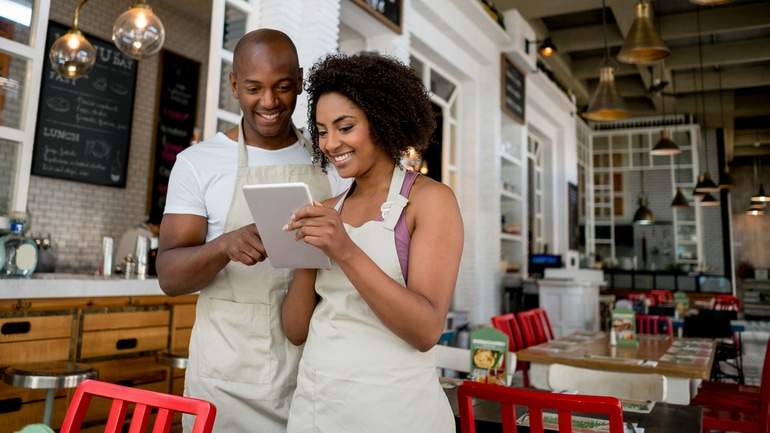
Apple Tablets
Apple’s tablet is called the iPad and it runs on the iOS operating system. The iPad serves as the POS terminal and can be left stationary on the counter or carried throughout the restaurant by staff.
Because Apple makes both the hardware (the iPad) and the software (iOS), the two are designed to work in tandem with one another for a seamless user experience. Though iPads can be a slightly pricier option for restaurants, there are a number of benefits:
- A crystal clear interface that is easy to learn right out of the box
- Layers of security that help to protect against viruses
- Regular updates that roll out automatically across devices
Android Tablets
On the other hand, Android tablets are made by a number of different companies, such as Samsung, LG, Lenovo, and more. This means that there are many different kinds of Android tablets that can be used as a POS terminal, including variations in size and style.
However, the drawback is that some systems have a steeper learning curve than others and updates are more fragmented.
Printers
Though email and text receipts are gaining popularity, most restaurants still rely on printers for two reasons: to provide customers with receipts and to print order tickets for kitchen staff. As a result, restaurants often need two different types of printers.
Receipt/Thermal Printers
Receipt/thermal printers print customer receipts from tablets. These printers can be wireless or wired to the router via Ethernet cable.
Kitchen/Impact Printers
While receipt/thermal printers are great for printing customer receipts, they’re not designed for the high heat of restaurant kitchens.
On the other hand, impact printers are specially designed for printing kitchen tickets. Impact printers transfer ink mechanically so the ink will not smudge, even if the printer’s next to a 400ºF+ oven. Impact printers are also louder than receipt printers, making them great for noisy kitchens where tickets can easily be missed.
Barcode Scanners
A barcode scanner is needed to manage inventory and speed up the checkout process. Barcode scanners work by pulling product info from an item and adding it to the customer’s checkout total. Barcode scanners can be connected to POS terminals so that scanning can be done from the register, at a table, or in an order screen.
Cash Drawer
A cash drawer is a secure place to store cash for transactions. Cash drawers can come in several sizes and most POS-compatible cash drawers can be connected to terminals via USB or Bluetooth.
Payment Devices
According to a TSYS Consumer Payments study, 74% of customers prefer to use either credit or debit cards at dine-in restaurants. To accommodate this common type of POS transaction, you’ll need a payment device.
These devices can accept payments three different ways:
- By reading a card’s magstripe as a card is swiped.
- By reading a card’s EMV chip.
- Using near-field communication to accept payments from mobile wallet apps such as ApplePay, Google Pay, or Samsung Pay.
A more traditional payment device is a mobile or stationary credit card reader. There are also mobile payment terminals that connect to tablets via Bluetooth or through the audio jack.
Routers
A router communicates between the Internet and Internet-connected devices to provide secure, local wireless coverage. This allows your POS tablets, printers, and other devices to communicate with one another wirelessly. If your restaurant is on the small side, it’s best to look for a router that takes up as little space as possible. However, if your venue is bigger, you may need more than one router to cover your space.
Mac Mini
POS set-ups will multiple iPad terminals require a central system, such as a Mac Mini or a main iPad, to act as the server or “brain” of the POS system. This device syncs all the POS terminals together so that changes on one terminal are reflected on all other terminals.
Customer Facing Display (CFD)
A Customer Facing Display (CFD) is a digital screen (often an iPad or other tablet), that allows you to display itemized order information to customers. Customers will see their detailed orders in real-time, including menu items, menu modifiers, and prices. When purchasing a CFD, look for options that allow you to customize the font, colors, and images to match your brand.
The benefit of a CFD is that it allows guests to visually confirm their order, helping to reduce errors and improve service. A CFD can also help to boost the average check size when set up to highlight special offers, new dishes, and menu modifiers – extra cheese, anyone?
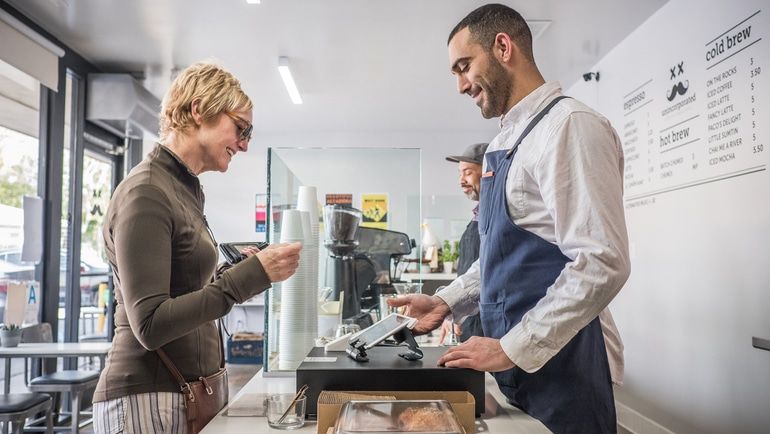
Kitchen Display Systems (KDS)
A Kitchen Display System (KDS) is a digital screen that replaces the printed or handwritten ticket orders that kitchens have traditionally relied on. As soon as an order is sent from the POS, it appears on the KDS, providing a seamless line of communication between the front-of-house and back-of-house teams.
The benefits of a KDS that’s integrated with your POS system? Streamlined kitchen communication, decreased ticket times, and fewer order errors.
Though the restaurant world can feel like a far cry from Silicon Valley, today’s restaurateurs are more tech-savvy than ever before. So even if you have no idea what JavaScript is, knowing your POS from your KDS can help you choose the restaurant technology that will save you time and help you run a more successful business.

Get the guide that helps you evaluate different POS solutions and find the right one for your business.



